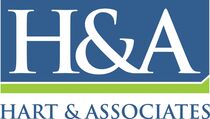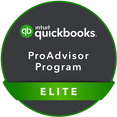|
In some industries, service has become a quaint memory. Customers are often reduced to selecting the provider that costs or annoys them the least.
But the golden rule has not been repealed. Pleasing your customers can create a powerful competitive advantage – and a few simple changes may increase your bottom line. To distinguish your firm from the rest, establish the following customer service policies and procedures.
At worst, the loss will not be compounded by damage to your reputation. At best, the money will come back multiplied by repeat business and referrals. Quality service is a powerful marketing tool that is surprisingly easy to implement. Simply imagine how you would want to be treated and provide that treatment to your customers. As customer satisfaction increases, your profits will follow.
The fraud triangle is a model that describes three components that need to be present in order for fraud to occur:
When fewer than three legs of the triangle are present, we can deter fraud. When all three are present, we leave ourselves open to fraud. Motivation Financial pressure at home is an example of a motivation to commit fraud. The fraud perpetrator finds themselves in need of large amounts of cash due to any number of reasons: poor investments, health care expenses, family requirements, gambling, a flamboyant lifestyle, or social pressure. In short, the person needs money – fast. Rationalization The person who commits fraud rationalizes the act in their minds:
At some point in the process, the person who commits fraud loses their sense of right and wrong. They stop believing there will be consequences. Opportunity Here is where you as a business owner can truly help prevent fraud. If there is a leak in your control processes, then you have created an opportunity for fraud to occur. Employees who handle cash, have signatory authority on a bank account, or manage financial records with poor oversight could combine the opportunity for fraud to occur with the ability to cover the act up for an indefinite period of time. Seventy-seven percent of all fraud occurs in one of these departments: accounting, operations, sales, executive/upper management, customer service, purchasing and finance. The banking and financial services, government and public administration, and manufacturing industries are at the highest risk for fraud cases. (Source: ACFE) Prevention Once you understand issues leading to fraud, prevention is the next step. To some degree, all three points on the triangle can be controlled; however, most fraud prevention programs primarily focus on the third area: Opportunity. When you can shut down the opportunity for fraud, then you’ve gone a long way to prevent it. While we hope fraud never happens to you, it makes good sense to take preventative steps to avoid it. Please give us a call if you would like to discuss options that may assist your business to avoid becoming victim to fraud.
Beginning January 1, 2016, the new published mileage rates are as follows:
This general information should not be acted upon without first determining its application to your specific situation. Please contact your CPA or tax advisor for additional details.
|
AuthorSuccessfully meeting the challenges inherent to new and smaller businesses provides me with a special type of satisfaction. Archives
February 2022
Categories
All
|





 RSS Feed
RSS Feed







